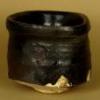Since Steve directed a question my way on "aji" and the preservation of iron/steel, I started this new thread as it seemed more appropriate than to take the other off topic...
Steve wrote: "I'd also like to ask Chris, who seems so taken with the notion of "aji," where he draws the line between appropriate cleaning and inappropriate (too much) cleaning. Does the primacy of aji mean leaving some rust on an iron tsuba? After all, that rust does add the "flavor" of decades/centuries of aging, reflecting so "wabi-ly" the "natural decay, imperfection, and organic form and process...the entropy with grace." Right? On the other hand, active red rust IS eating away at the steel, the steel the artist rendered in a particular way for a particular effect, an effect being "defaced" by the activities of the red rust. Right, Ford? Sasano and Kremers would have us clean away every trace of red rust from our steel guards. But doesn't that wreck the "entropy with grace" so highly prized by some?"
In discussing restoration with professionals, I have often heard it said,"do no harm".
There are two common forms of rust: Fe2O3, which is red rust and is "bad", and Fe3O4, which is black and is "good". All tsuba are covered with rust, hopefully the black type.
Loose red rust can be gently removed, and then converted to black rust. One does not need to remove steel and grind down the faces of the tsuba until it is smooth and featureless.
It is the same with a nakago. Red rust is converted to black. You don't grind down the nakago....



